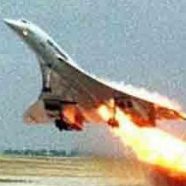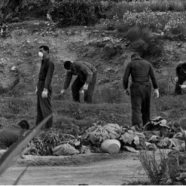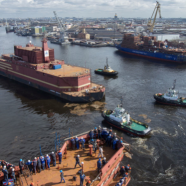In search of a solution for the contaminated water of Fukushima
Earthquake and Tsunami in Japan, March 11, 2011 – Press release n°17
It is said that the Japanese government is about to authorize the release of radioactive water from Fukushima Daiichi into coastal waters and the ecosystem of the Pacific Ocean. Tepco, operator of the plant that crashed on March 11, 2011, the Ministry of Economy, Trade and Industry and the International Atomic Energy Agency are promoting this option. This voluntary pollution would set a precedent that could be brought up again in the Atlantic Ocean in the event of a major accident at a nuclear power plant or at the La Hague atomic complex in Normandy.
From Franco to Trump: the Thermonuclear Saga
On January 17th, 1966 at 9:22 in the morning, a B52-Bomber from the US Air Force collided mid-air with an Air Tanker-KC135 during a supply drop at an altitude of 9450 meters. The cabins from the planes crashed into Palomares, a village 80 km from Carthagena in the province of Almería, Spain. Debris fell into the Mediterranean and blanketed the streets, hills, fields, and beaches. Amongst the debris, there were four thermonuclear bombs.
The Atomic cartel on the defensive
Press release and map on the occasion of the Nobel Peace Prize ceremony, Sunday December 10th, awarding Madam Setsuko Thurlow, survivor of the atomic bombing of Hiroshima and Madam Beatrice Fihn, Executive Director of ICAN (International Campaign to Abolish Nuclear Weapons).
At present, 127 States have adopted or signed the Treaty on the Prohibition of Nuclear Weapons. None of the nuclear-armed States took part in negotiations. Japan did not participate in the vote.
2017 : The Bastille Day is nuclear
July 14, 2017. (9h26 Paris time).
Unfortunately France and the United States of America have published a joint statement to name the Treaty on the Prohibition of Nuclear Weapons as a nuisance and a threat to World peace. (1)
The Treaty on the Prohibition of Nuclear Weapons was adopted on July 7, 2017 by 122 States with support of the United Nations. It was inspired by the Convention on the Prohibition of Chemical Weapons initiated by France. It completes the Treaty on the Non-Proliferation of Nuclear Weapons and the Nuclear-Test-Ban Treaty. The preamble mentions not only the catastrophic consequences of use of nuclear ammunition but also the risk of accidental triggering.
















